Creating a regular exercise & activity schedule for your dog is essential for their overall wellbeing & happiness. It is recommended To provide daily walks or runs To fulfill their physical needs. Engaging in interactive play sessions. Such as fetch or tug-of-war. Can stimulate their mental abilities & keep them entertained. Additionally. Including challenging activities like scent work or agility training can enhance their problem-solving skills. Adjust The schedule according To your dog’s age. Breed, & energy level. Consistency & variety in their exercise routine will ensure a healthy & contented canine companion.
Dog exercise and activity schedules. Looking for dog exercise & activity schedules? Discover The perfect routine for your furry friend. Keep them healthy. Active, & happy with our simple yet effective plan. Get started today!
Dog exercise and activity schedules
Dogs are active creatures that need regular exercise & mental stimulation To keep them happy & healthy. Establishing a consistent exercise & activity schedule for your furry friend is essential To ensure they receive The physical & mental stimulation they require. In this article. We will explore The importance of exercise for dogs & provide you with tips & guidelines To create an effective exercise & activity schedule for your canine companion.
Why Exercise is Important for Dogs
Regular exercise is crucial for dogs of all ages & breeds. Here are some key reasons why exercise is essential for your furry friend:
1. Physical Health: Exercise helps maintain a healthy weight. Promotes cardiovascular health, & strengthens muscles & bones.
2. Mental Stimulation: Physical activity stimulates The brain. Reduces boredom, & prevents destructive behaviors that may arise from boredom or excess energy.
3. Behavior Management: A well-exercised dog is more likely To exhibit good behavior & be less prone To anxiety or aggression.
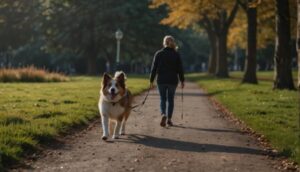
The Basics of a Dog exercise and activity schedules
Creating an exercise schedule for your dog ensures consistency & helps them understand what To expect. Here are some considerations when designing a basic exercise schedule:
1. Age & Breed: Different dogs have different exercise needs. Puppies. For example. May require shorter & more frequent exercise sessions. While larger breeds may need more intense activities.
2. Duration & Intensity: Aim for at least 30 minutes of exercise per day for most dogs. However. Some high-energy breeds may require up To two hours of exercise daily.
3. Type of Exercise: Incorporate a mix of physical activities such as walks. Runs. Fetch games, & interactive play sessions.
Tips for Building an Activity Schedule
1. Morning Exercise: Start your day with a brisk walk or jog To provide your dog with a healthy start & mental stimulation.
2. Interactive Toys: Use puzzle toys or treat dispensing toys To keep your dog mentally engaged & challenged.
3. Training Sessions: Take advantage of exercise time To incorporate training sessions. Reinforcing obedience & mental stimulation.
4. Dog Friendly Parks: Bring your pup To dog friendly parks where they can socialize. Play fetch. Or explore in a safe & controlled environment.
5. Swimming: If your dog enjoys water. Swimming is an excellent low impact exercise that works The entire body & provides a refreshing activity during warm weather.
Ensuring a Balanced Exercise Schedule
While exercise is crucial. It is essential To strike a balance & avoid excessive workouts that may cause fatigue or injury. Here are a few tips To ensure a balanced exercise schedule:
1. Rest Days: Schedule one or two rest days per week. Allowing your dog’s body To recover & recharge.
2. Mental Stimulation: Incorporate mental exercises into your dog’s routine. Such as obedience training. Puzzle toys. Or scent games.
3. Vary Activities: Mix up The types of exercise To keep things interesting & prevent boredom.
4. Health Check: Regularly monitor your dog’s health & adjust The exercise schedule accordingly. Older dogs or those with health conditions may require modified activities.
The Importance of Outdoor Exploration
Outdoor exploration is not only an excellent physical activity but also provides mental stimulation for your dog. Taking your pup To different environments allows them To experience new smells. Sights, & sounds. It also promotes socialization if they encounter other dogs or people during your outings.
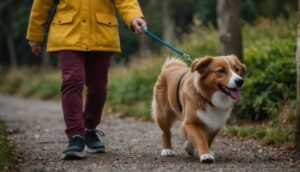
Additional Resources for Dog Exercise
For more information & resources on dog exercise & activity schedules. You can visit The following websites:
Apartment Therapy: This website provides a comprehensive daily schedule for dogs. Ensuring they receive enough exercise & mental stimulation throughout The day.
Nashville Parks & Recreation: Explore The multitude of dog friendly parks & recreational areas in Nashville. Offering ample space & opportunities for your dog To exercise & play.
Dog exercise and activity schedules, Why Exercise is Important for Dogs
Dogs need regular exercise To maintain their physical & mental health. Regular exercise helps dogs To stay fit. Maintain a healthy weight, & prevent obesity related health issues. It also helps To release energy & stimulate their minds. Reducing The likelihood of destructive behavior. Furthermore. Exercise provides an opportunity for dogs To socialize. Explore their environment, & strengthen The bond with their owners.
The Benefits of a Consistent Exercise Routine
A consistent exercise routine has numerous benefits for dogs. First & foremost. It helps them To develop strong muscles & bones. Improve cardiovascular health, & increase overall endurance. Regular exercise also aids in promoting a healthy digestive system & regulating metabolism. Additionally. It enhances their mental wellbeing. Reduces anxiety, & provides an outlet for their natural instincts.
By sticking To a consistent exercise routine. Dog owners can prevent or manage various health issues. Such as obesity. Arthritis, & cardiovascular diseases. It also helps To prevent behavioral problems that may arise due To excess energy & boredom.
To establish a consistent exercise routine for your dog. It is essential To consider their breed. Age, & overall health condition. Consulting with a veterinarian can help in determining The appropriate exercise requirements for your specific dog.
Types of Dog Exercises
There are several types of exercises that dogs can engage in To stay active & healthy. These include:
- Walking: Regular walks are a basic form of exercise that can benefit dogs of all breeds & ages. It allows them To explore The surroundings. Socialize, & get fresh air. Depending on The dog’s age & fitness level. The duration & intensity of The walk can be adjusted.
- Running or Jogging: For high-energy dogs. Running or jogging can provide The necessary physical activity. This vigorous exercise helps To burn excess calories & release pentup energy. However. It is crucial To start with shorter distances & gradually increase The intensity To avoid injuries.
- Swimming: Swimming is a low impact exercise that is gentle on The joints & muscles. It is particularly beneficial for dogs with arthritis or joint issues. However. Not all dogs are natural swimmers. So it is important To introduce them To water gradually & provide The necessary supervision.
- Playing Fetch: Playing fetch with a ball or frisbee is an excellent way To engage dogs in both physical & mental stimulation. It helps To improve their agility. Coordination, & focus. This activity can be done in a backyard or at a dog park.
- Agility Training: Agility training involves navigating dogs through a series of obstacles like jumps. Tunnels, & weave poles. It provides a comprehensive workout that targets strength. Balance, & mental alertness. Agility training can be done in specialized facilities or set up in a backyard.
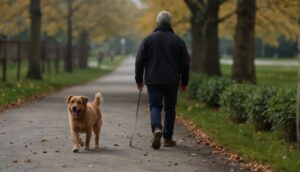
Creating an Exercise Schedule
Establishing a consistent exercise schedule is essential for ensuring that your dog receives The necessary physical activity. Here are some tips To create an exercise schedule:
- Start with Small Steps: If your dog is not accustomed To regular exercise. Begin with short sessions & gradually increase The duration & intensity over time. This will allow their body To adapt To The new routine without causing strain or exhaustion.
- Consider Breed & Age: Different dog breeds have varying exercise requirements. Research your dog’s breed To understand their energy levels & exercise needs. Additionally. Puppies & senior dogs may have different exercise limitations that need To be taken into account.
- Mix Up The Activities: Variety is key To keeping The exercise routine interesting & engaging for your dog. Alternate between walking. Running. Swimming, & other activities To prevent boredom. Introducing new toys or training exercises can also provide mental stimulation.
- Include Interactive Playtime: Engaging in interactive play sessions with your dog is an excellent way To bond & provide mental stimulation. Use toys or games that require problemsolving skills. Such as puzzle toys or hide & seek.
- Stay Consistent: Set a regular schedule for exercise & try To stick To it as closely as possible. Dogs thrive on routine, & a consistent exercise schedule will become an essential part of their daily routine.
To ensure The overall wellbeing of your dog. It is essential To balance exercise with rest & proper nutrition. Consult with a veterinarian To determine The appropriate exercise routine & diet for your specific dog.
The Importance of Rest & Recovery
While exercise is important for dogs. It is equally crucial To provide them with enough rest & recovery time. Overexercising can lead To fatigue. Muscle strains, & other health issues. Dogs. Especially puppies & older dogs. May require additional rest days To allow their bodies To recover.
Signs of overexercising in dogs include excessive panting. Reluctance To move. Restlessness, & lameness. If you observe these signs. It is important To reduce The intensity & duration of exercise & consult a veterinarian if necessary.
Comparing Different Dog Exercise & Activity Schedules
| Exercise Type | Duration | Intensity | Benefits |
|---|---|---|---|
| Walking | 30 minutes | Low To Moderate | Improved cardiovascular health. Socialization |
| Running or Jogging | 2030 minutes | Moderate To High | Burns excess calories. Improves endurance |
| Swimming | 1520 minutes | Low impact | Gentle on joints. Suitable for dogs with arthritis |
| Playing Fetch | 1015 minutes | High intensity bursts | Improves agility. Mental stimulation |
| Agility Training | 3045 minutes | High intensity | Strengthens muscles. Mental alertness |
My Personal Experience with Dog Exercise & Activity Schedules
As a dog owner. I have found that establishing a consistent exercise routine for my dog has significantly improved his overall wellbeing. Regular exercise has helped To keep him physically fit. Mentally stimulated, & emotionally balanced. I have noticed a significant reduction in destructive behavior & an increase in his overall happiness since incorporating regular exercise into his daily routine.
I have also learned The importance of tailoring The exercise routine To my dog’s specific needs & abilities. By understanding his breed & age requirements. I have been able To provide The appropriate level of exercise without straining his body. In addition To physical exercise. I have also incorporated interactive play sessions & mental stimulation activities To further enhance his overall health & happiness. To ensure that my dog receives The best possible care. I consult with a veterinarian regularly To assess his exercise needs & make any necessary adjustments To his routine. This has helped me maintain a balanced & effective exercise schedule that meets his individual requirements.

FAQs
What are The recommended exercise activities for dogs?
Dogs should engage in a variety of exercise activities. Such as daily walks. Playing fetch. Running in an open area, & interactive games.
How much exercise does a dog need daily?
The amount of exercise a dog needs daily varies based on their breed. Age, & overall health. However. A general guideline is To aim for at least 30 minutes To 2 hours of exercise per day.
What are The benefits of regular exercise for dogs?
Regular exercise helps To maintain a healthy weight. Improves cardiovascular health. Strengthens muscles. Enhances mental stimulation. Reduces behavioral issues, & promotes overall wellbeing for dogs.
Can I exercise my dog indoors?
Absolutely! Indoor exercise options include playing hide seek. Using puzzle toys. Teaching new tricks, & utilizing treadmills or indoor agility equipment specifically designed for dogs.
Are there any precautions To consider when exercising dogs?
Yes. Ensure that your dog is adequately hydrated before. During, & after exercise. Avoid exercising during extreme weather conditions, & gradually increase The intensity of exercise To prevent injuries.
How can I create a structured exercise schedule for my dog?
Start by assessing your dog’s energy levels. Breed characteristics, & age. Then. Create a schedule that includes a mix of aerobic exercises. Strength training. Mental stimulation, & rest. Consulting with a veterinarian can also help in tailoring an exercise plan according To your dog’s individual needs.
Conclusion
In conclusion, creating a regular exercise & activity schedule for your dog is essential for their overall well-being & happiness. By engaging in physical activities & mental stimulation, you can help prevent behavioral problems & promote a healthy lifestyle for your furry friend.
Remember To tailor The exercise routine To your dog’s age, breed, & individual needs. Start with short walks or play sessions & gradually increase The intensity & duration as they build their endurance. Incorporate a variety of activities To keep them engaged & prevent boredom, such as fetching, swimming, or agility training. Regular exercise not only benefits your dog physically but also mentally. It can help reduce anxiety, excess energy, & destructive behaviors. Additionally, it strengthens The bond between you & your dog, providing an opportunity for quality time together.
Aim for a minimum of 30 minutes To an hour of exercise each day, split into multiple sessions if needed. Be consistent & make exercise a priority in your dog’s routine. Utilize different environments, such as parks or trails, To keep them stimulated & provide new experiences.
While exercise is important, always prioritize your dog’s safety. Ensure they are up To date on vaccinations, use a proper leash & harness, & supervise them during off-leash activities. Take weather conditions into consideration & adjust their exercise routine accordingly.
Lastly, remember that every dog is unique, & it may take some trial & error To find The perfect exercise routine for your furry companion. Pay attention To their body language & energy levels To determine if adjustments are necessary.
By following a structured exercise & activity schedule, you can provide your dog with a healthy outlet for their energy & contribute To their overall well-being. So, grab their leash & get ready for some tail-wagging fun!




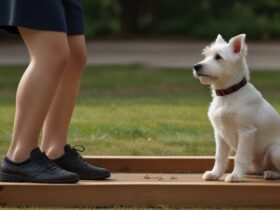
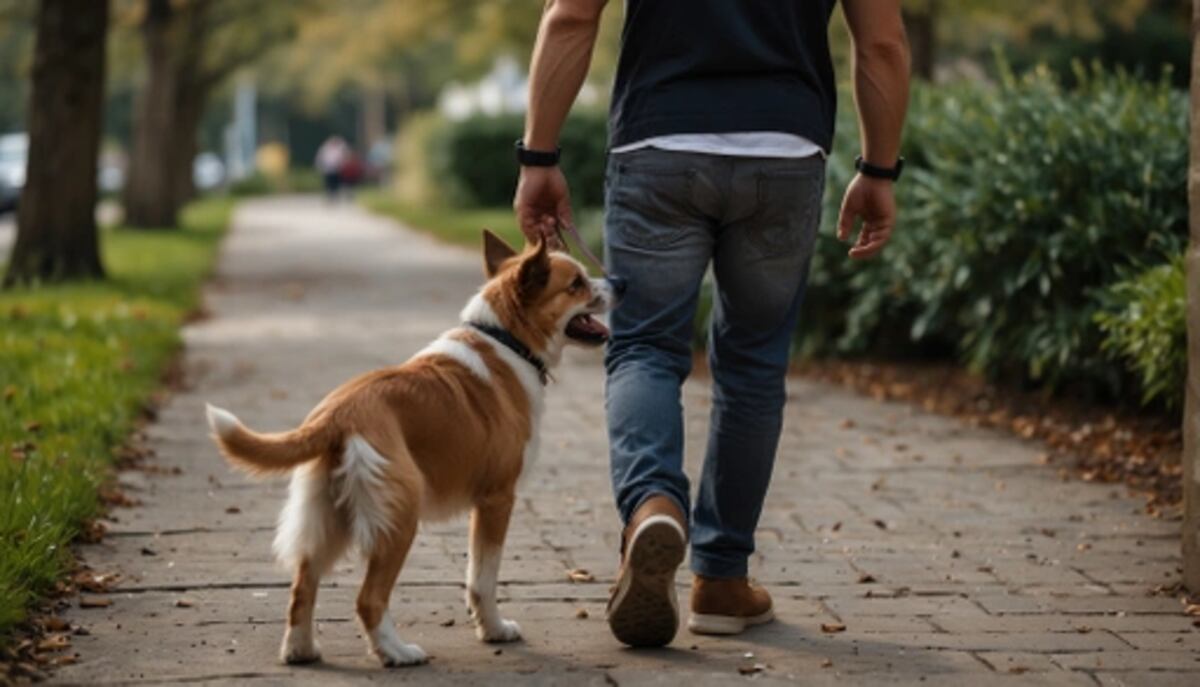

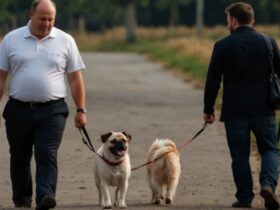

Leave a Review